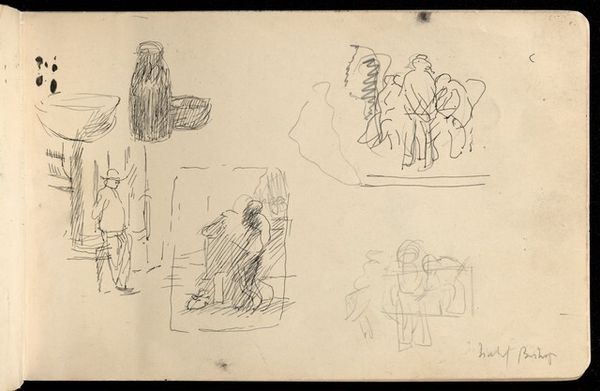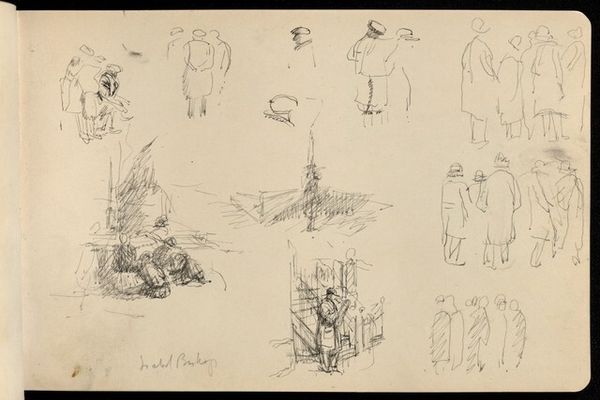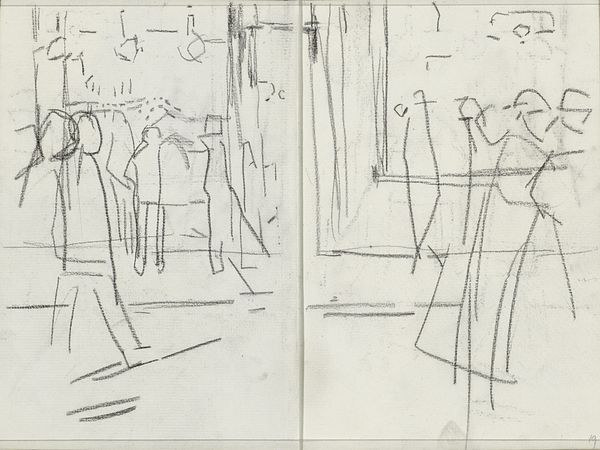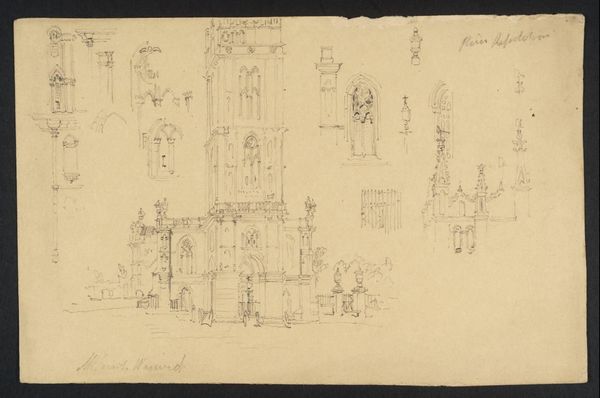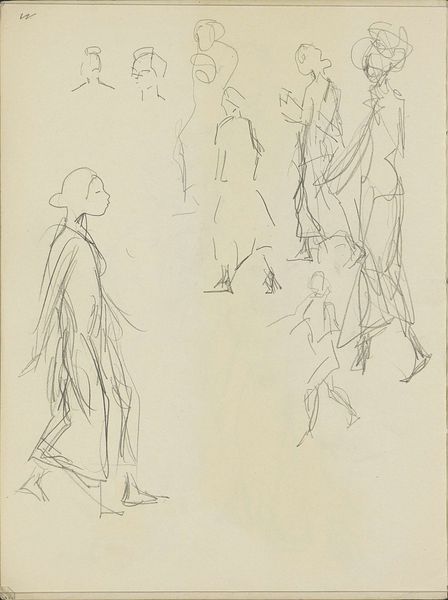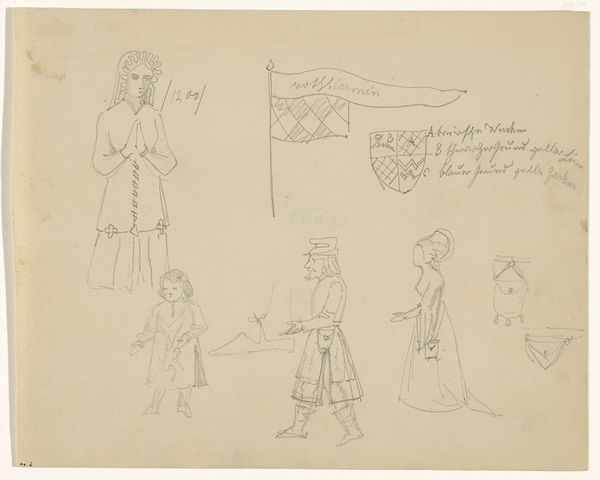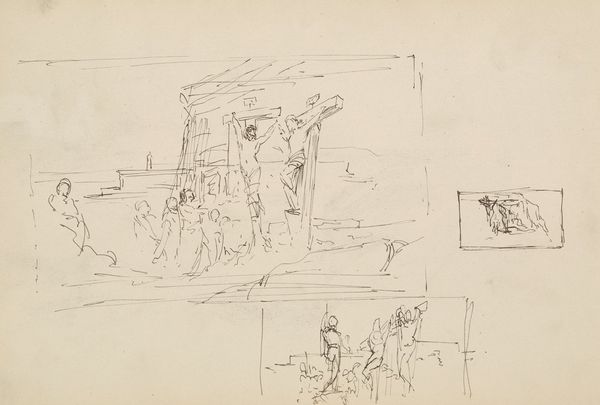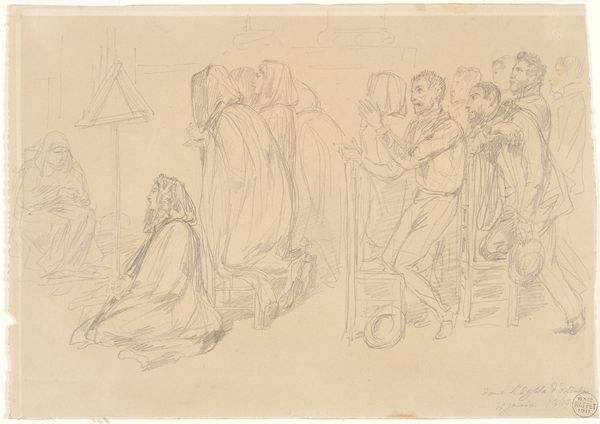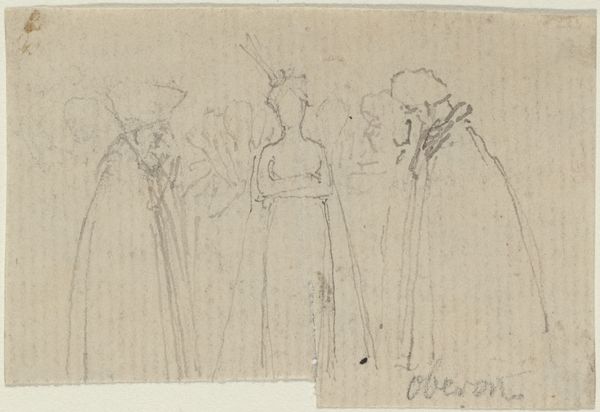
drawing, pencil
#
portrait
#
drawing
#
figuration
#
pencil
Copyright: National Gallery of Art: CC0 1.0
Curator: This is "Isabel Bishop Early Sketchbook," a pencil drawing created between 1928 and 1936 by Isabel Bishop. Editor: Right off the bat, there’s something so honest and unaffected about this page. It’s less about perfected lines, and more about capturing…gestures, snippets of everyday life. A voyeuristic glimpse into Bishop's creative process. Curator: It is a glimpse. Bishop, a keen observer of urban life, particularly in New York City, filled sketchbooks like this with observations of people in public spaces. It feels like a very democratic act of documentation. The casual nature actually speaks volumes. Editor: Democratic, yes, absolutely. In this sea of figures, notice that none are really the focal point, and instead contribute to this collective humanity. This almost challenges traditional portraiture's individualistic tendencies. We don't know these people, they’re everyman. It is this candid style that lends itself to the work's beauty. Did Bishop focus on particular communities? Curator: Washington Square Park was a frequent subject, and her art often showcased working women, shoppers, students, all intertwined in the bustling urban landscape. She embraced diversity long before it was, shall we say, trending. Editor: That makes so much sense, knowing this. To observe women inhabiting public space with such intent—it’s pushing back against so much historical erasure, right? Not just visibility, but really occupying, claiming space. Even this technique – her loose lines seem to almost blend figures together into a communal body. This feels intrinsically feminist to me, giving us access into how everyday women existed and interacted. Curator: Yes! The act of witnessing is, I think, crucial here. Bishop gave these otherwise overlooked interactions longevity and visibility. It's as if Bishop's art offers a shared archive of urban life in that era. Editor: These sketches are not precious; they’re pure energy, documenting snippets that she’s collected as she’s travelled, thought, or perhaps even hoped. Curator: I love that thought; there is, indeed, a beautiful hopefulness to these observations. Something about their very transience renders them timeless, don’t you think?
Comments
No comments
Be the first to comment and join the conversation on the ultimate creative platform.

